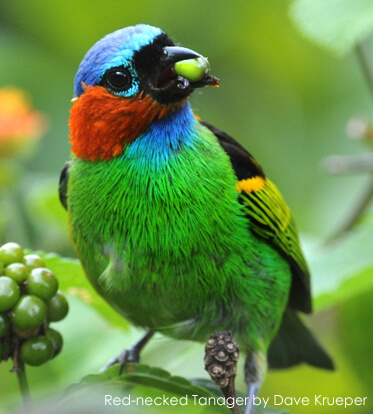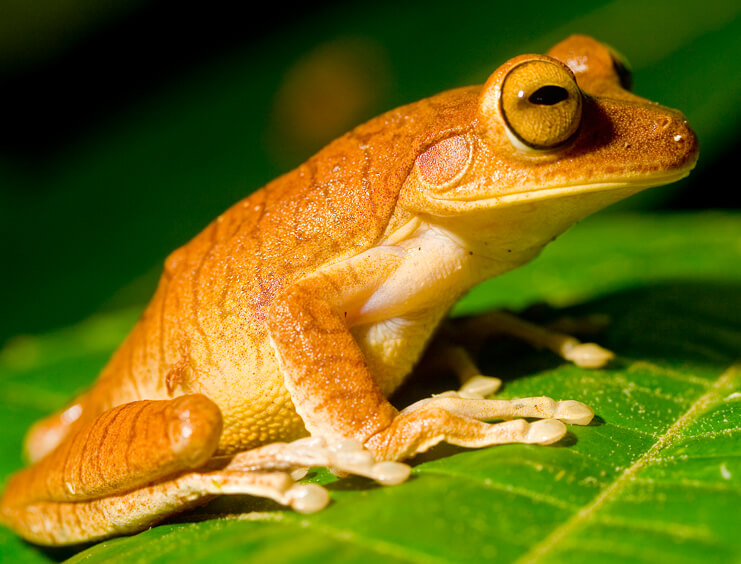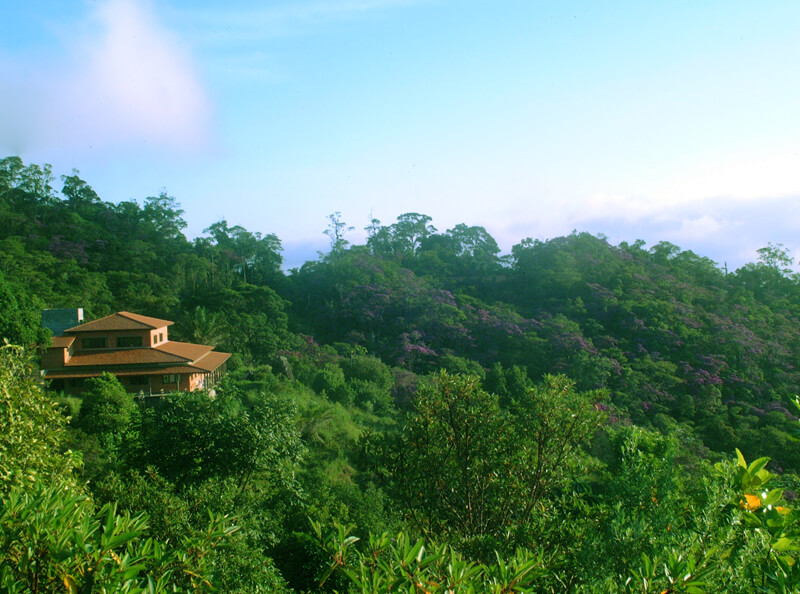Two New Additions to Brazilian Reserve Help Protect Rare Birds, Critically Endangered Monkey
 |
 |
(Washington, D.C., September 30, 2013) Two new properties totaling about 237 acres (96 hectares) have been added to the Brazilian Serra Bonita Reserve, expanding protections for six rare birds, a critically endangered monkey, the yellow-breasted capuchin, and a wide diversity of flora and additional fauna, including 330 bird species. Another measure of the conservation value of the region was illustrated in the 1990s when a world record of 458 tree species was counted in an area the size of a football field.
The acquisition of the two parcels was a joint effort involving three conservation organizations—American Bird Conservancy (ABC), Instituto Uiraçu, and Rainforest Trust (formerly called World Land Trust–US). Funding for the purchase was provided by these groups, in addition to the Robert Wilson Charitable Trust and other private individuals and groups.
The reserve is located in the Serra Bonita Mountain Range, which is one of the last remnants of moist submontane Atlantic rainforest in southern Bahia. This range covers an area of approximately 18,525 acres (7,500 hectares), located in the municipalities of Camacan and Pau Brazil, about 80 miles (130 km) from the port city of Ilhéus on the Atlantic Coast.
Birds of conservation concern that depend on the area include six species that are on the published IUCN threatened bird species list: the Bahia Tyrannulet, Phylloscartes beckeri (endangered–will be downlisted); Pink-legged Graveteiro, Acrobatornis fonsecai (vulnerable); Plumbeous Antvireo, Dysithamnus plumbeus (vulnerable); Salvadori's Antwren, Myrmotherula minor (vulnerable); Buffy-fronted Seedeater, Sporophila frontalis (vulnerable); and Temminck's Seedeater, Sporophila falcirostris (vulnerable). These latter two species are attracted to the area's seeding bamboo.
“This project adds irreplaceable acreage to a high-priority conservation area. With more than 93 percent of the Atlantic Rainforest already lost, we cannot afford to lose any more of these forests with their precious diversity of birds, monkeys, butterflies, and thousands of other species. The collaboration among ABC, Rainforest Trust, and the Instituto Uiraçu shows how, by working together, groups can make a lasting difference in the race to save these unique and rare habitats,” said David Younkman, Vice President for Conservation at ABC.
“We consider it a top priority to raise the funds to expand the protections of the whole mountain through land purchase. Serra Bonita mountain is still almost totally covered with either pristine or secondary forest. This expansion could easily be accomplished since most farmers have already put their land up for sale due to the collapse of the cacao economy,” said Dr. Vitor Becker, Director of Research at Instituto Uiraçu. Becker added that the reserve is open for business and has a wonderful lodge that can accommodate small groups of birders.
“Serra Bonita's biological diversity is astonishing. The more we learn about this unique site, the more we realize it's a wildlife gem worth protecting. As the Atlantic Rainforests of Brazil continue to be destroyed, the importance of acting now to save Serra Bonita grows. Rainforest Trust is proud to work with ABC and Instituto Uiraçu to ensure that Serra Bonita, and the many endangered species it contains, receives the protection it truly deserves,” said Dr. Paul Salaman, CEO of Rainforest Trust.
 |
The Serra Bonita Mountain Range is part of the Brazilian Atlantic Forest biome which contains the highest levels of biological diversity and endemism in the Western Hemisphere. It is recognized as one of the five most species-rich biomes in the world and is considered a biodiversity hotspot. Sadly, it is still subject to high rates of habitat loss and is ranked as one of the most threatened ecosystems in the world. Serra Bonita Reserve protects an important fragment of this historically vast habitat. The Atlantic Forest has lost more than 93 percent of its original cover (most of that in the last 50 years) and the devastation continues at an alarming rate.
Fortunately, the Serra Bonita Mountain Range is still well-conserved, with approximately 50 percent of the land cover a pristine forest of extreme biological importance. The remaining area is a forest-dominated landscape composed of a mosaic of forests in different successional stages, with largely secondary forests in advanced stages of recuperation, interspersed with cabruca (traditional Brazilian agroforests in which cacao trees are planted under thinned-out native forests) and small areas of pasture. Serra Bonita's forests also protect numerous springs which provide fresh water for the inhabitants of Camacan and Pau Brazil.
Situated at the center of Serra Bonita range, the Serra Bonita Reserve Complex (SBR) is a private conservation initiative which comprises a “consortium” of privately owned properties totaling about 4,446 acres (1,800 hectares). In 2004, 2,964 acres (1,200 hectares) of the area were converted into four private natural heritage reserves. The SBR is the second largest area of private reserves in the Atlantic Forest Biodiversity Corridor and is seen as a pioneer in the protection of submontane forest in the region.
The diversity of species on Serra Bonita is extremely rich, and the area has been designated as an Important Bird Area. A preliminary study estimated that some 400 species of birds inhabit the mountain range, nine of which are threatened and 59 that are endemic to the Atlantic Forest. The SBR is also the only designated protected area that preserves the habitat of the Pink-legged Graveteiro, or Acrobatornis fonsecai (a black and gray bird, endemic to the Atlantic Forest and IUCN listed as vulnerable). The species represents a genus and species only discovered in 1996 and whose range is restricted to this region.
The Serra Bonita research station and lodge provides high-quality accommodation to researchers, ecotourists, and birdwatchers. All income generated goes toward maintenance and further conservation at the reserve. Those interested in visiting should contact Clemira Souza at clemirasouza@gmail.com.
 |  |  |
|---|---|---|
Bokermannohyla diamantina by Robin Moore | Serra Bonita research centerby John Tschirky | Red-necked Tanager by Dave Kreuper |


















































